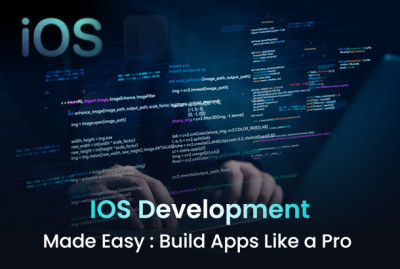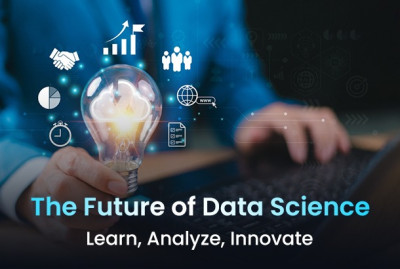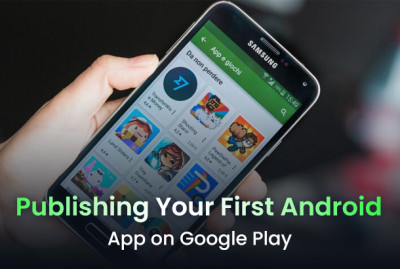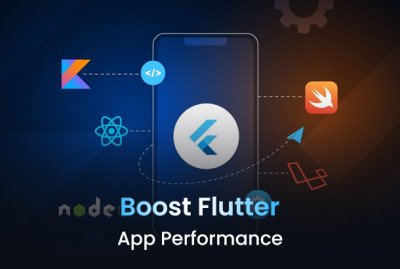What is AI (Artificial Intelligence) ?
Share :
What is AI (Artificial Intelligence)?
A lot of such technologies are evolving in the recent IT (Information Technology) sector in the world. At that time, Artificial Intelligence (AI) and Machine Learning (ML) are at the top of such technologies.
If the gift of nowadays modern technology is 'Artificial Intelligence-AI'. Today the world of technology is expanding and with the development of new technologies, its efficiency is also increasing. At the same time, the prevalence of human labor and technology with AI (Artificial Intelligence) is increasing.
AI (Artificial Intelligence) radiates and addition human potentials, they increase productivity and are moving from simple reasoning towards human-like imaginary abilities. To understand the impact of Artificial Intelligence (AI), it important to learn lessons from failures and past successes, as well as to hope its future potential and directions are legal, ethical and socio-economic implications.”
Uses in different-different industries of Artificial Intelligence
In many fields including sociology, math, biology, neuroscience, psychology, computer science, philosophy, commerce, transport, and utilities.
UNCONVENTIONAL GUIDANCE OF AI (ARTIFICIAL INTELLIGENCE)
Artificial is a simple unit of composed neural networks. Each unit usually does a very simple calculation like an addition or an application of a simple function. It takes input from many other neurons and a mass or collection of things that data that comes in and sends it downstream to other neurons. These things are connected in a kind of network. Every single computer on the planet operates through algorithms.
We are unaware of the use of 'Artistic Intelligence' in the medical industry, but in some medical institutes, doctors are now being given artificial intelligence training. So that the disease can be diagnosed as early as possible. For example, to identify cancer cells from our normal cells.
In addition, the most common use of AI today is camera filters. These filters provide you with instantaneous motion, as well as your imagination of what type of scene fits into any photo you give.
AI in HealthCare
Developed an algorithm with drugs that detect 8 variables in diabetic patients to determine if hospitalization is necessary.
The app, called BilScreen, uses smartphone cameras, ML tools, and computer vision algorithms to detect increased levels of bilirubin in a person's eye sclera (white area), which is used to diagnose people with pancreatic cancer. This cancer has no known symptoms, so it has the worst prognosis of all cancers.
In Entertainment
Apps like Netflix and Amazon that we use in our day-to-day life are just one of the best templates for AI. The ML algorithm determines where users recommend shows and products based on the user's progress and compares them to other users. General Chat Chat Lounge
Mathematical rules have become so smart over time that users want to buy a product as a gift, for themselves / or note, or for different family members' different choices.
Artificial Intelligence Trends In Various Sectors
- HealthCare
- Finance
- Manufacturing
- Retail
- Entertainment
- Data Security
- Automotive
- HealthCare
- Medecision developed an algorithm for the detection of cancer cells.
- Finance
- Mastercard company use AI Decision Intelligence Technology to analyzed various data point to detect insidious and tricky transactions.
- Manufacturing
- Landing.ai claims to have created machine – vision tools. That tools find microscopic defects in objects like circuit boards using an ML. Because the ML algorithm trained using tiny volumes of sample images.
- Retail
- AI can be used in the retail industry, from identifying customers to personalizing promotions and inventory management.
- Entertainment
- Every day in life we saw a familiar application of AI with services like Amazon or Netflix wherein ML algorithms are analyzed users activities and compare them to other users.
- Data Security
- AEG (Automatic Exploit Generation) is a bot. AEG can determine whether the software has a bug that may cause security issues is exploitable. If a vulnerability is found then the boat secures it automatically.
- Automotive
- TeslaBot introduced by Tesla Automobile, Tesla models S and X are integrated with intelligent virtual assistance that’s allowing users to interact with the car from tablets or phones.







































































































































































































































































































(0) Comments
Write a comment